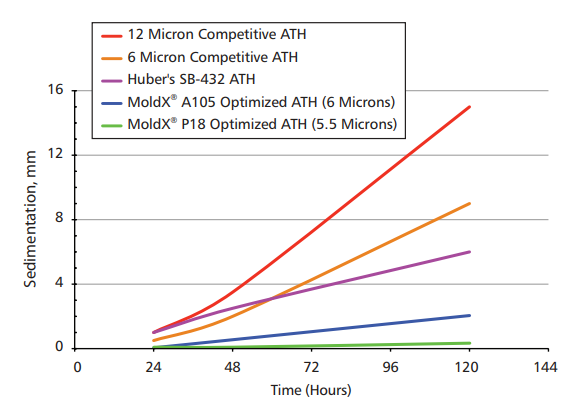Enhanced TDS
Knowde-enriched technical product data sheet
Identification & Functionality
- Chemical Family
- Chemical Name
- Composite Materials Functions
- CAS No.
- 21645-51-2
- EC No.
- 244-492-7
- Technologies
- Product Families
Features & Benefits
- Labeling Claims
- Materials Features
Applications & Uses
- Markets
- Applications
- Composites Processing Methods
Properties
- Chemical Properties
Value Units Test Method / Conditions Al(OH)₃ 99.6 % - Fe₂O₃ 0.007 % - Loss on Ignition at 1000°C 34.6 % - Na₂O (Soluble) 0.04 % - Na₂O (Total) 0.3 % - SiO₂ 0.005 % - - Typical Properties
Value Units Test Method / Conditions Bulk Density (Loose) 0.45 g/cm³ - Bulk Density (Packed) 0.8 g/cm³ - Free Moisture at 105°C 0.25 % - Specific Gravity 2.42 - - Surface Area 3.0 m²/gm - TAPPI Brightness 95.0 - - - Particle Size Distribution
Value Units Test Method / Conditions Median Particle Diameter 5.0 μm - Screen Analysis on 325 mesh 0.01 % - Screen Analysis through 325 mesh 99.99 % -
Technical Details & Test Data
- Performance
Why is Huber’s MoldX® P18 Optimized ATH an Outstanding Choice for Pultrusion?
Versatility
The product can be used in all types of pultrusion applications and has the following advantages:
- Lower pull force at 50-75 weight % of fiberglass.
- 25 to 200 phr ATH loading depending on weight % of fiberglass and resin type.
- Either unsaturated polyester or acrylic resins or blends.
- Even at high loadings, compounds have very low pull force.
- Higher loadings with the same or faster line speeds and lower total compound cost.
- Maintains mechanical properties.
Consistency in Manufacturing
- Greatly reduced possibility of die lock-up.
- Reduced sedimentation resulting in less down time for resin bath clean-out.
ATH Settling Behavior in Modar® Fire-Retardant Resin 875 at 25°C
Settling resistance is desirable for pultrusion to allow longer operating times between clean outs.
